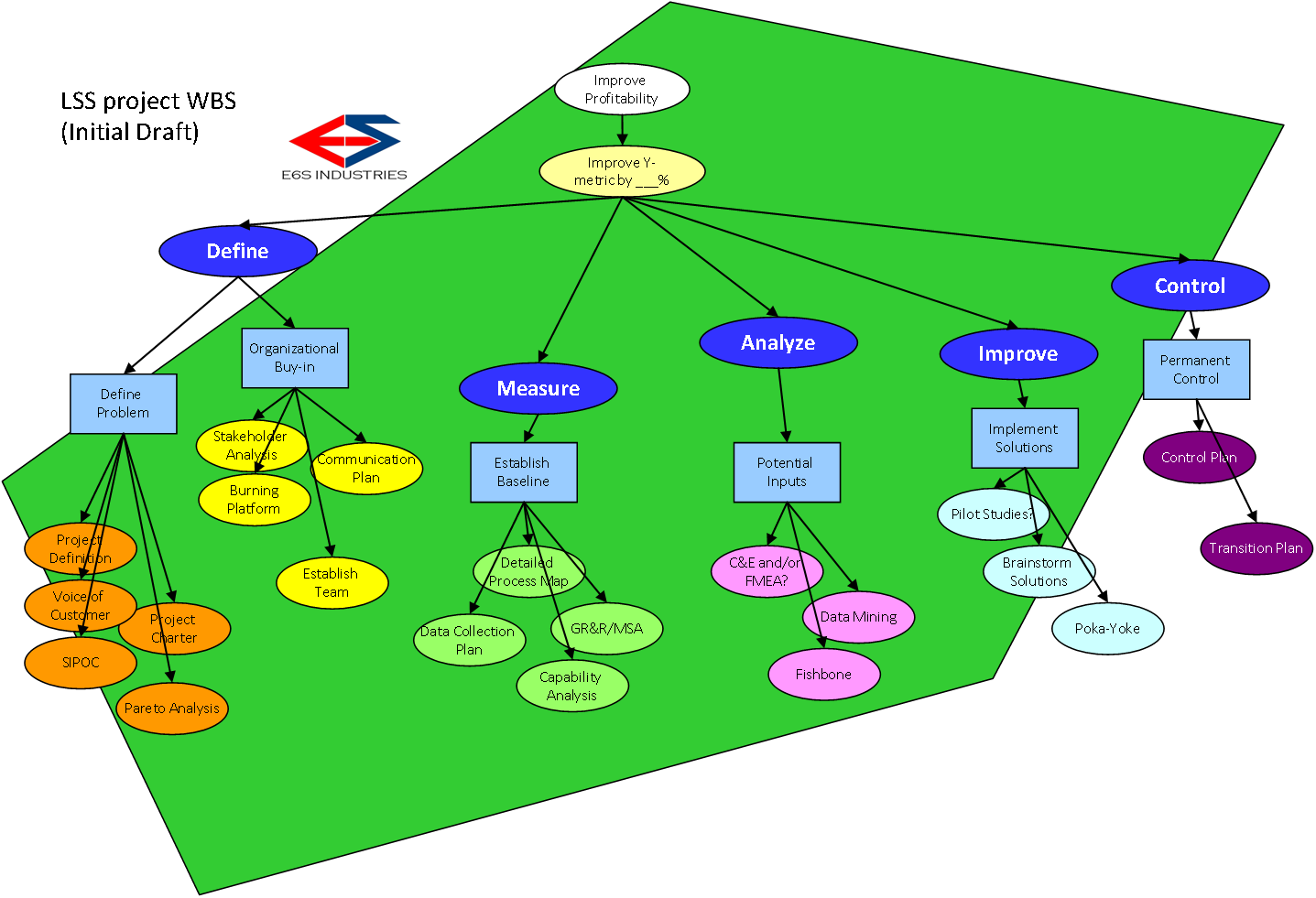E6S-041 WBS in LSS Part 3 - Wicked Bite-Sized
Intro: Welcome to the E6S-Methods podcast with Jacob and Aaron, your source for expert advice on Lean, Six Sigma, and performance improvement methods. In this episode number 41, make your projects Wicked Bite Sized. We conclude our discussion on the Work Breakdown Structure with specific tips to improve execution of your Lean Six Sigma projects. Here we go.
***How Do You Eat the Lean Six Sigma Elephant...? Wicked Bite-Sized with the WBS.***
Objections: We cannot plan ahead well enough for a WBS for all the unknowns of LSS projects---
Counter: Most practitioners in-part believe this because the WBS and many PM tools are not taught in most LSS programs. At the same time LSS projects usually fail due to poor project management. WBS is just one of these tools missing from the LSS curriculum.
I How to break down LSS projects into phases, Deliverables & work packages. Some practitioners do it without really knowing they're doing it or what it's called.
a. Create a LSS WBS. Show breakdown and dependencies.
Example Work Break-down Structure. Initial draft to represent the early phases and work packages of a Lean Six Sigma project.
II How the WBS will feed into other PM work tools.
a. More tools to come:
i. Time Estimations
1. PERT analysis (Project Evaluation and Review Technique)
2. 3-point Estimates
3. Triangular Distribution Estimates
4. Unofficial rule of Pi?
ii. Cost & Resource Planning
1. Be upfront with the Scope of Work so resources truly understand the depth of their involvement. Don’t undersell the commitment required. This will help them not underestimate their commitment.
iii. Network Diagrams
1. Critical Path & Float Estimations
iv. Gantt Charting
1. Understand milestone dependencies in each phase
2. The Decomposition of work helps uncover dependencies of milestones. How some actions cannot move forward without the completion of other actions.
a. WBS work packages to plan out resources & milestones and dependencies.
3. Incorporate Lead & Lag time
***How Do You Eat the Lean Six Sigma Elephant...? Wicked Bite-Sized with the WBS.***
Outro: Thanks for listening to episode 41 of the E6S-Methods Podcast. Stay tuned for episode number 42 where we kick of measure phase with the process flow diagram, also known as a process map. Subscribe to past and future episodes on iTunes or stream us live on-demand with Stitcher Radio. Have an idea for an episode? Contact us! Follow us on twitter @e6sindustries. Join a discussion on LinkedIn. Find outlines and graphics for all shows and more at www.E6S-Methods.com. “Journey Through Success”
